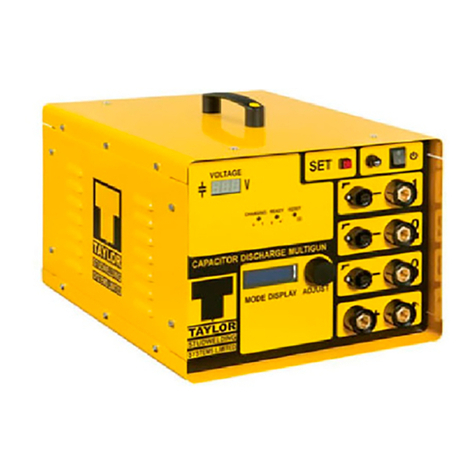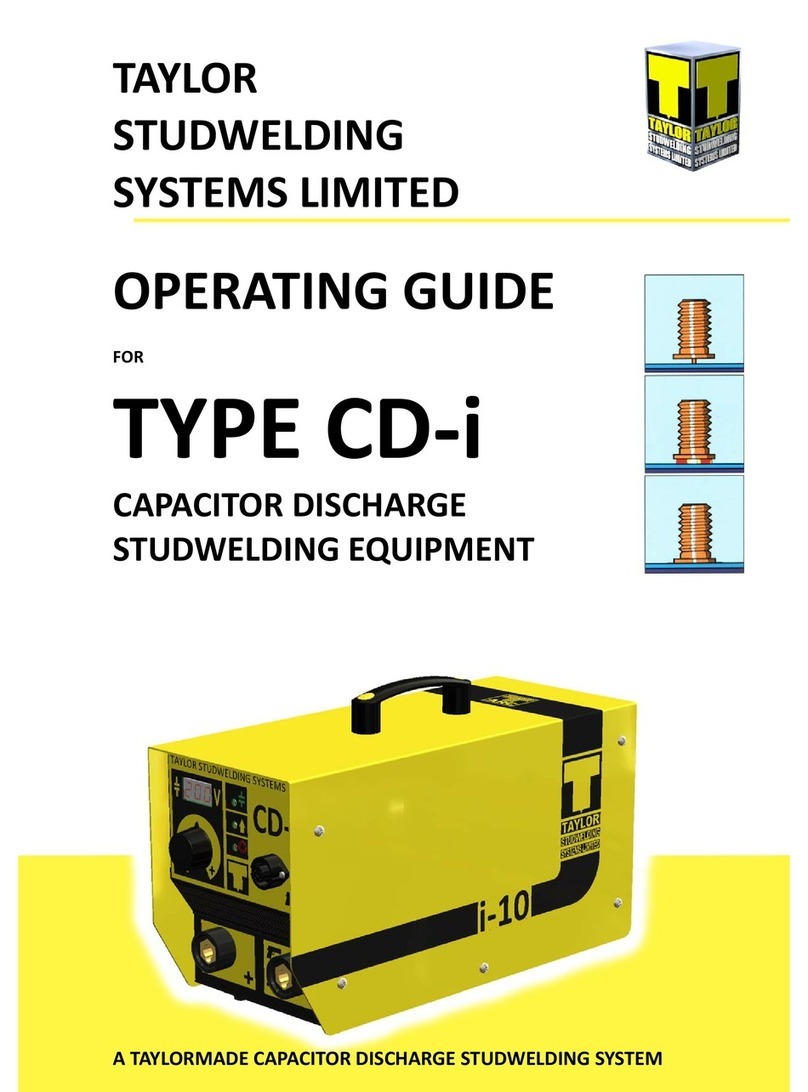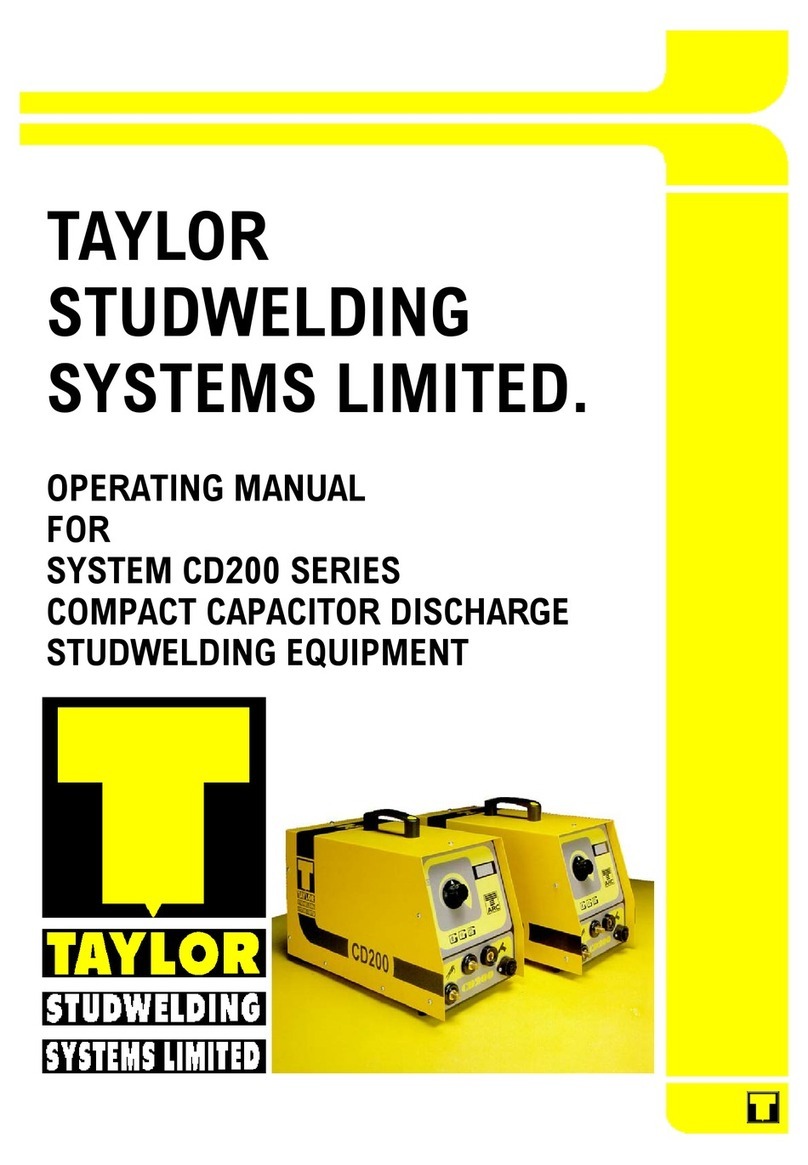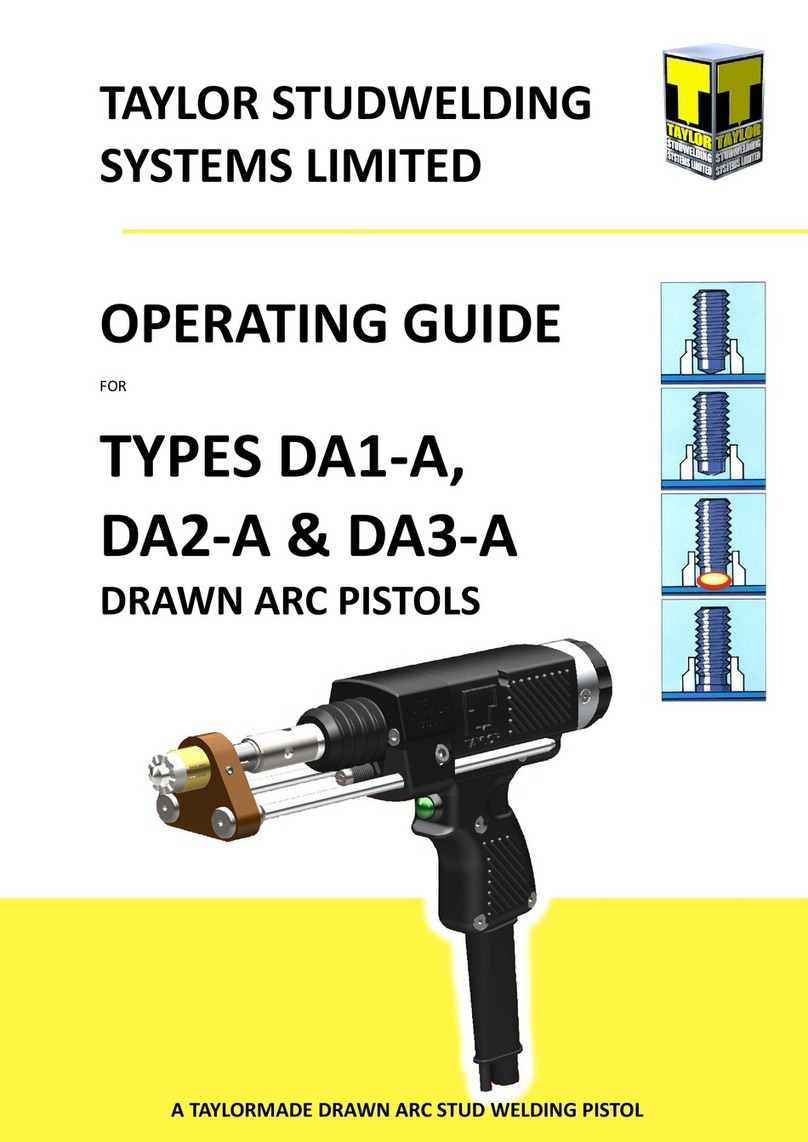
V-21A
IMPORTANT SAFETY INFORMATION !
5
PROTECT YOURSELF AND OTHERS !
Read and understand these safety notes.
ELECTRICAL
No poron of the outer cover of the welding controller should be removed by anyone other
than suitably qualied personnel and never whilst mains power is connected.
ALWAYS DISCONNECT THE MAINS LEAD BEFORE ATTEMPTING ANY
MAINTENANCE.
BEWARE - RISK OF ELECTRIC SHOCK !
Do not use any uids to clean electrical components as these may penetrate into the
electrical system.
Installaon must be according to the seng up procedure detailed on page 11 of this guide
and must be in line with naonal, regional and local safety codes.
FIRE
During welding small parcles of very hot metal are expelled. Ensure that no combusble
materials can be ignited by these.
PERSONNEL SAFETY
Arc rays can burn your eyes and skin and noise can damage your hearing. Operators and
personnel working in close proximity must wear suitable eye, ear and body protecon.
Fumes and gases can seriously harm your health. Use the equipment only in a suitably
venlated area. If venlaon is inadequate, then appropriate fume extracon equipment
must be used.
Hot metal spaer can cause re and burns. Appropriate clothing must be worn. Clothing
made from, or soiled with, combusble materials must NOT be worn.
Have a re exnguisher nearby and know how to use it.
Magnec elds from high currents can aect heart pacemakers or other electronically
controlled medical devices. It is imperave that all personnel likely to come into the vicinity
of any welding plant are warned of the possible risks before entering the area.
MAINTENANCE
All cables must be inspected regularly to ensure that no danger exists from worn or
damaged insulaon or from unsound electrical connecons. Special note should be made
of the cables close to the pistol, where maximum wear occurs. As well as producing
inconsistent welds, worn cables can overheat or spark, giving rise to the risk of re.































